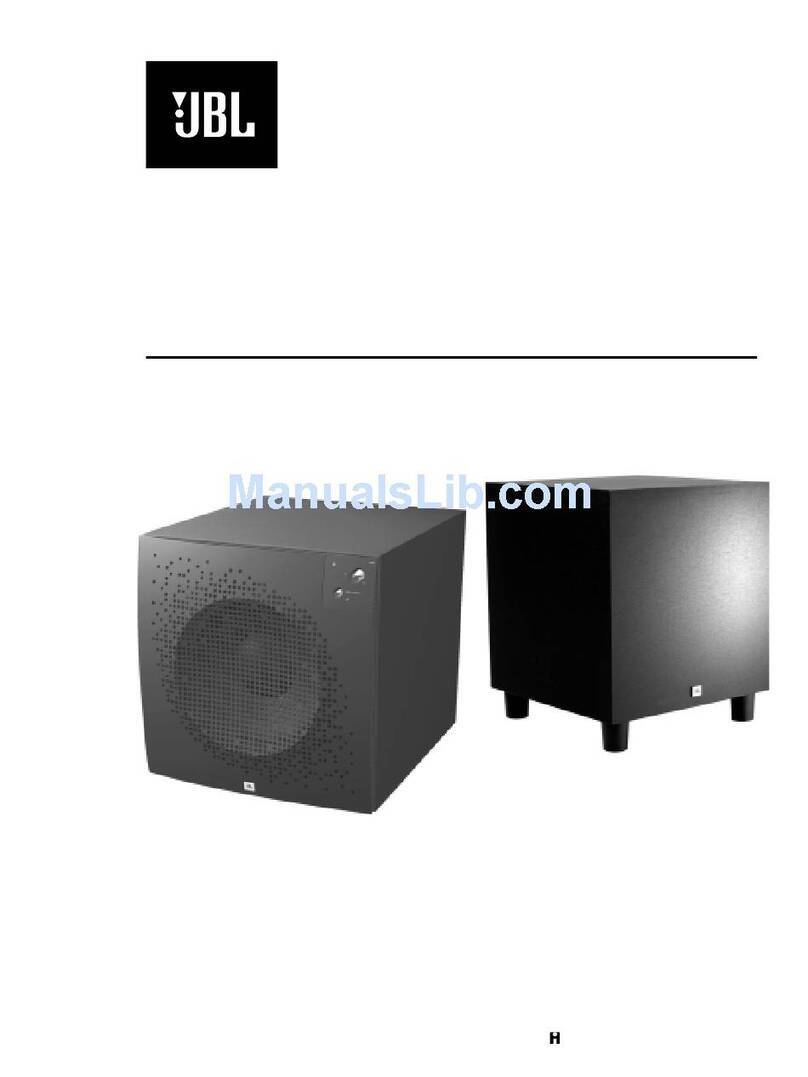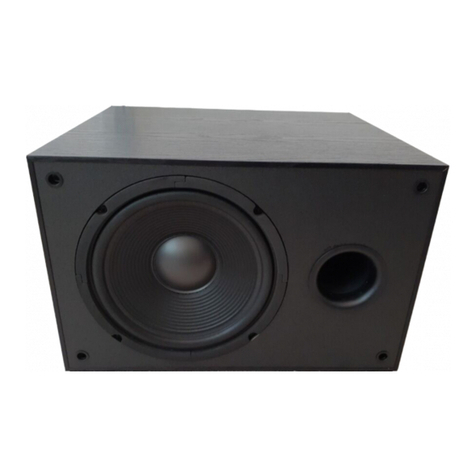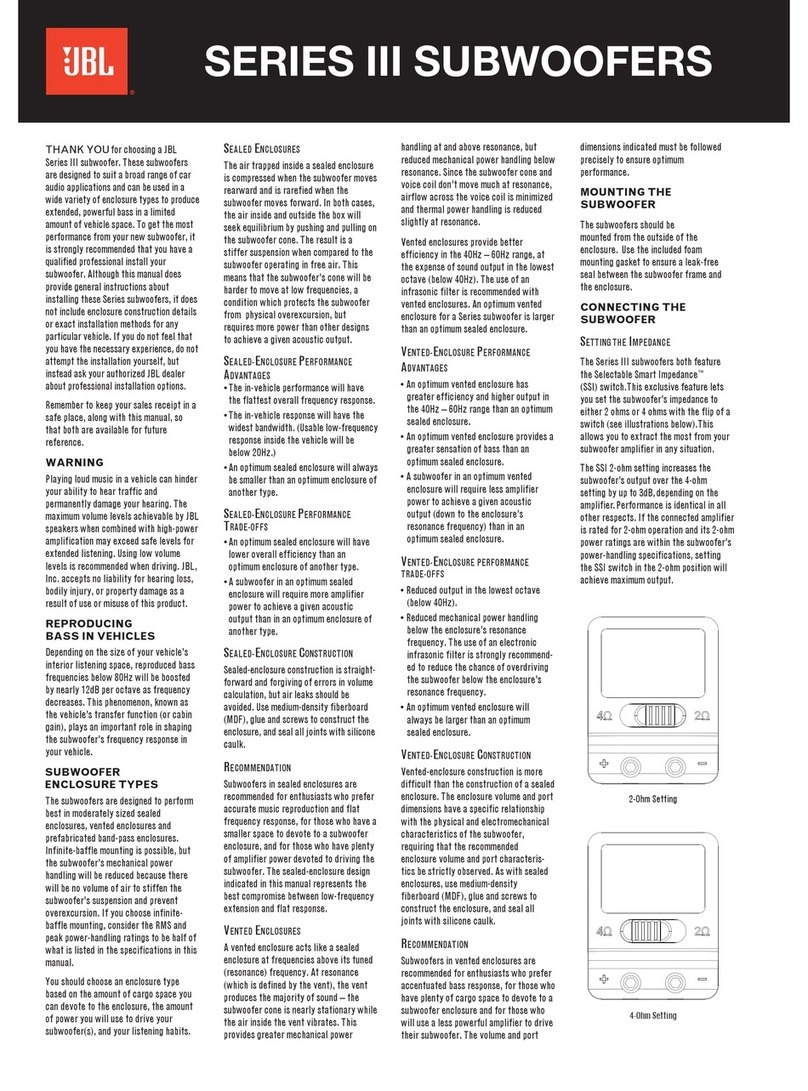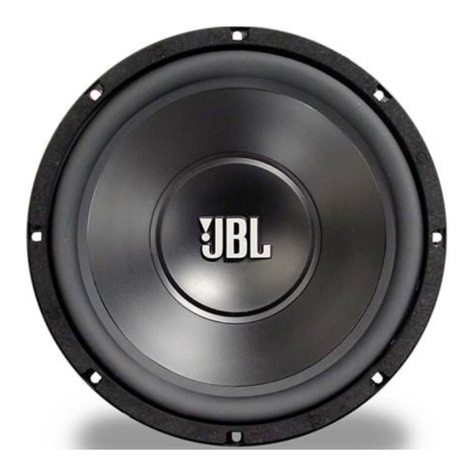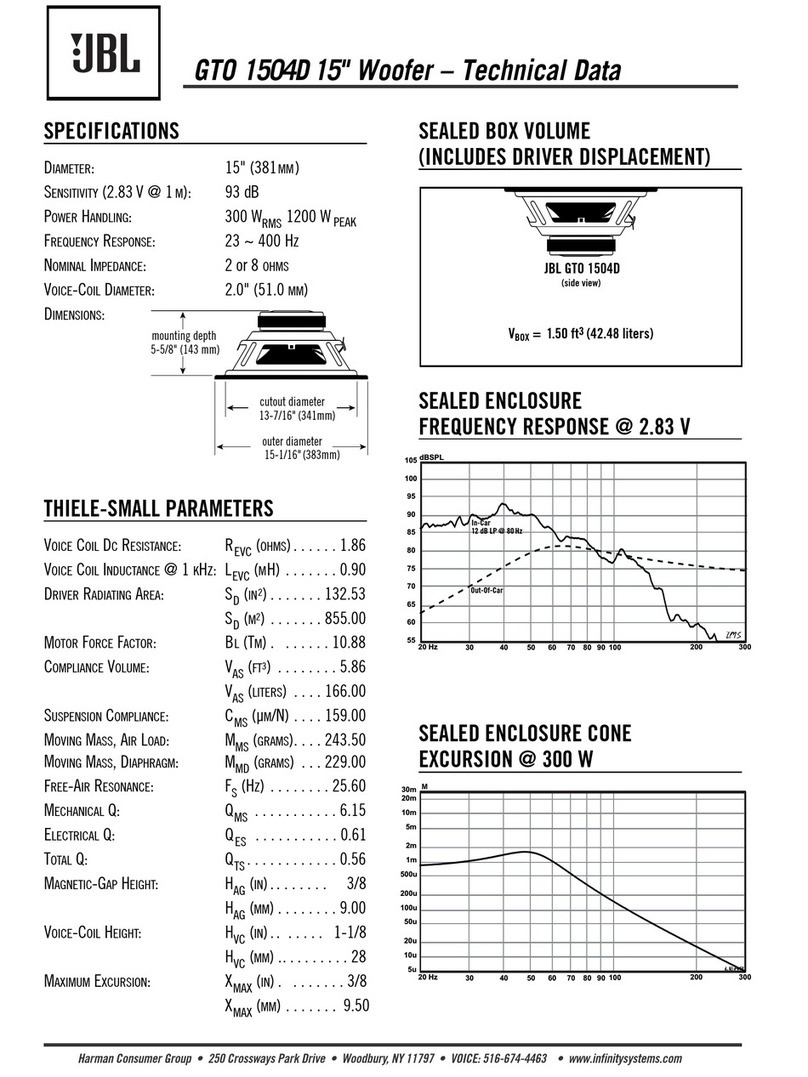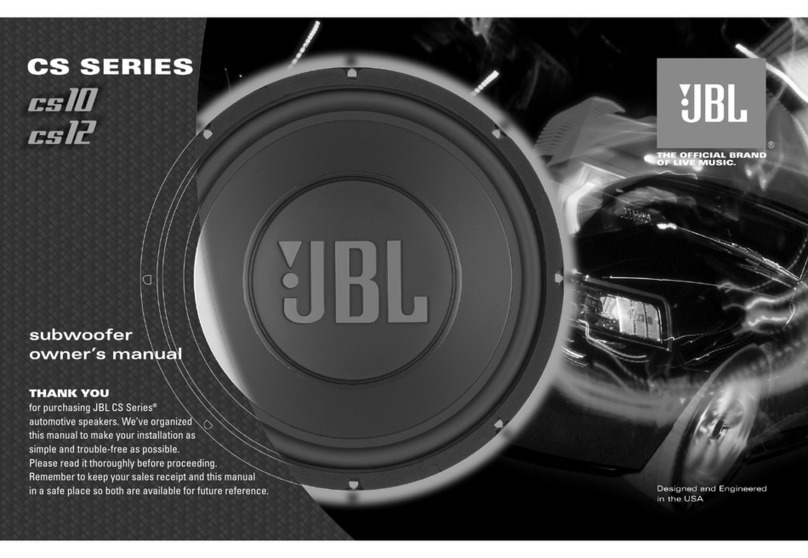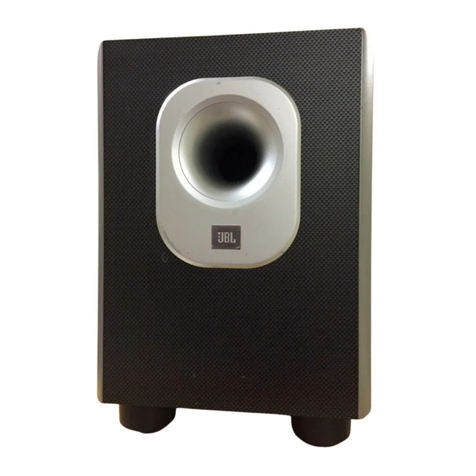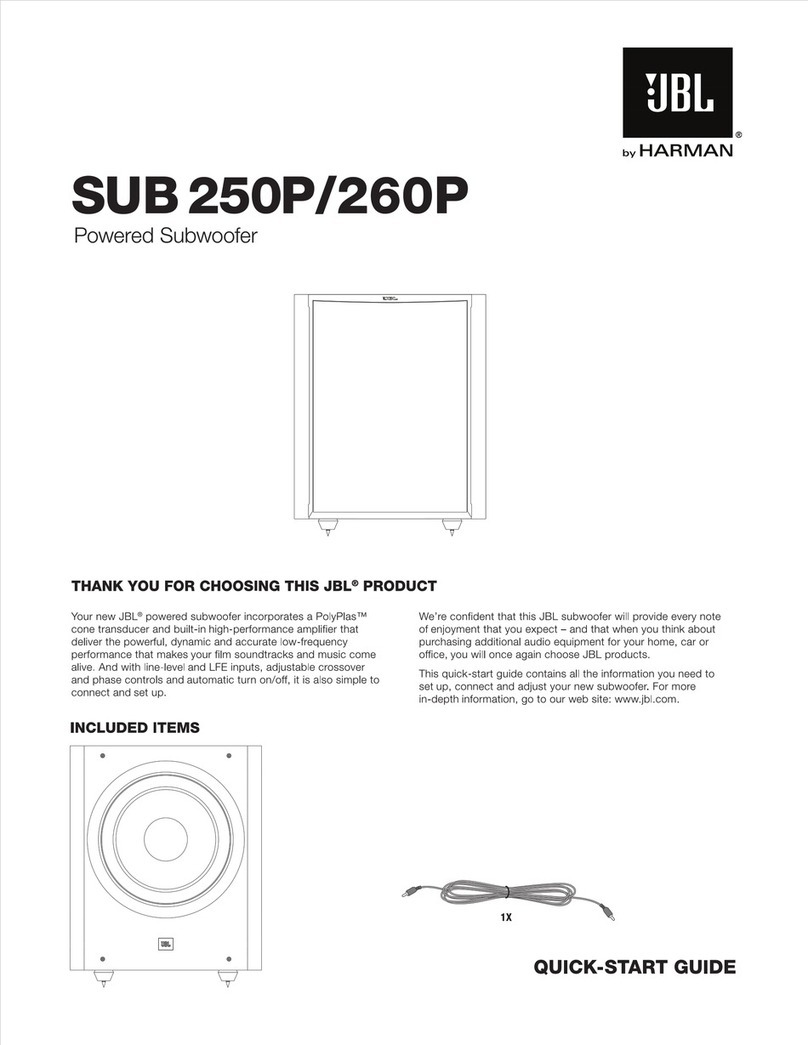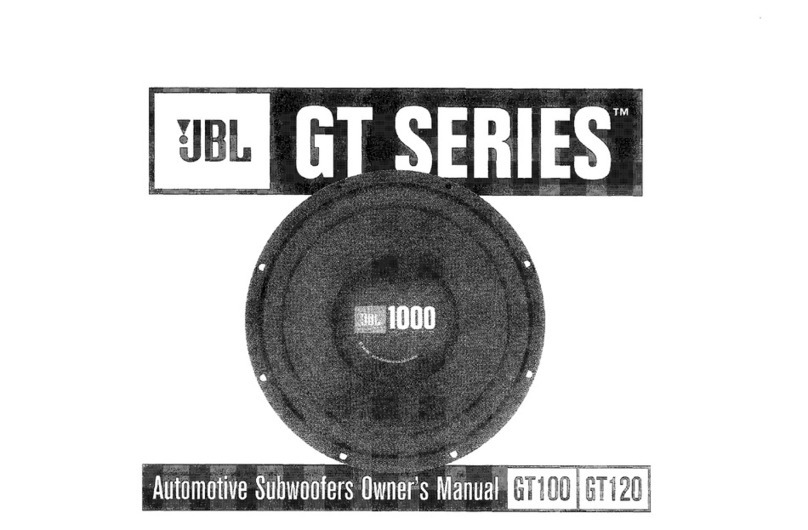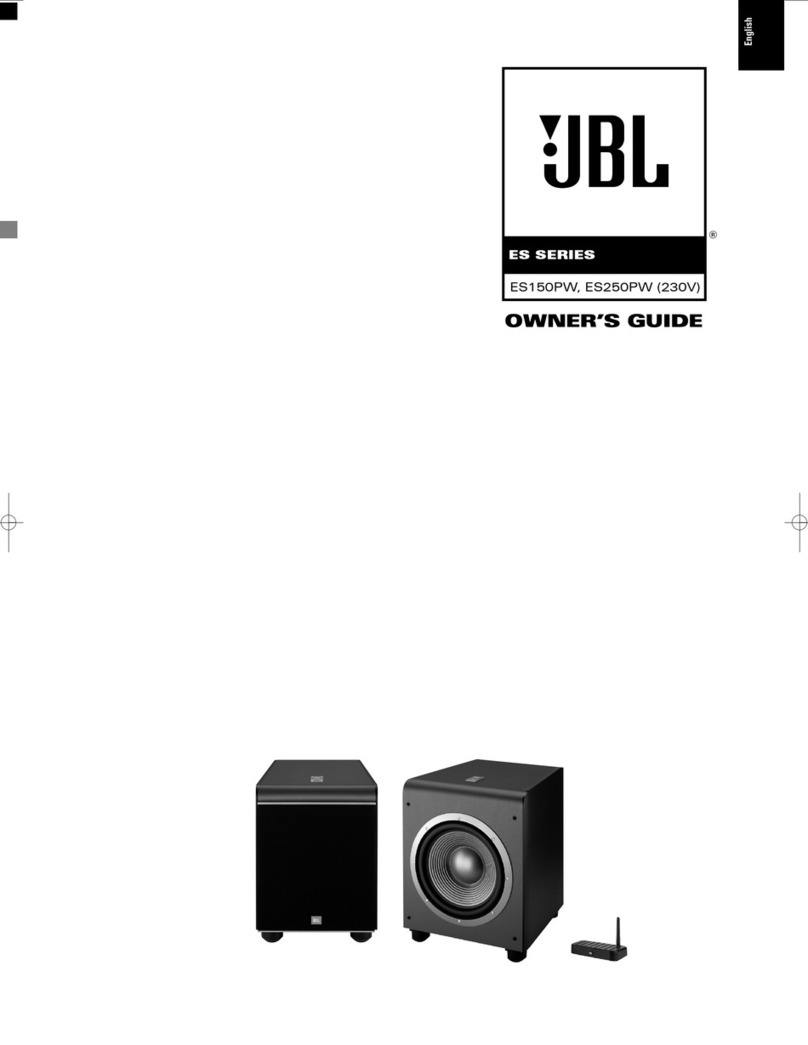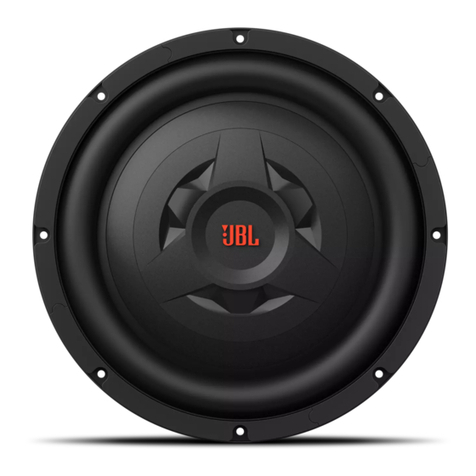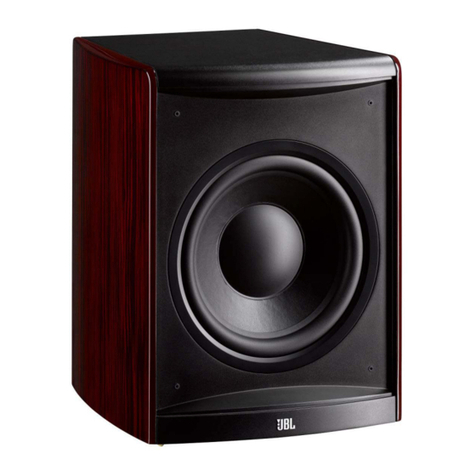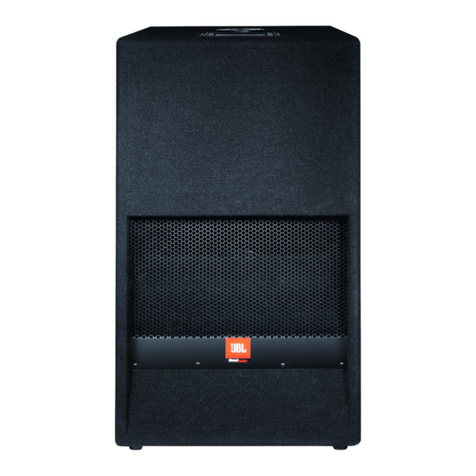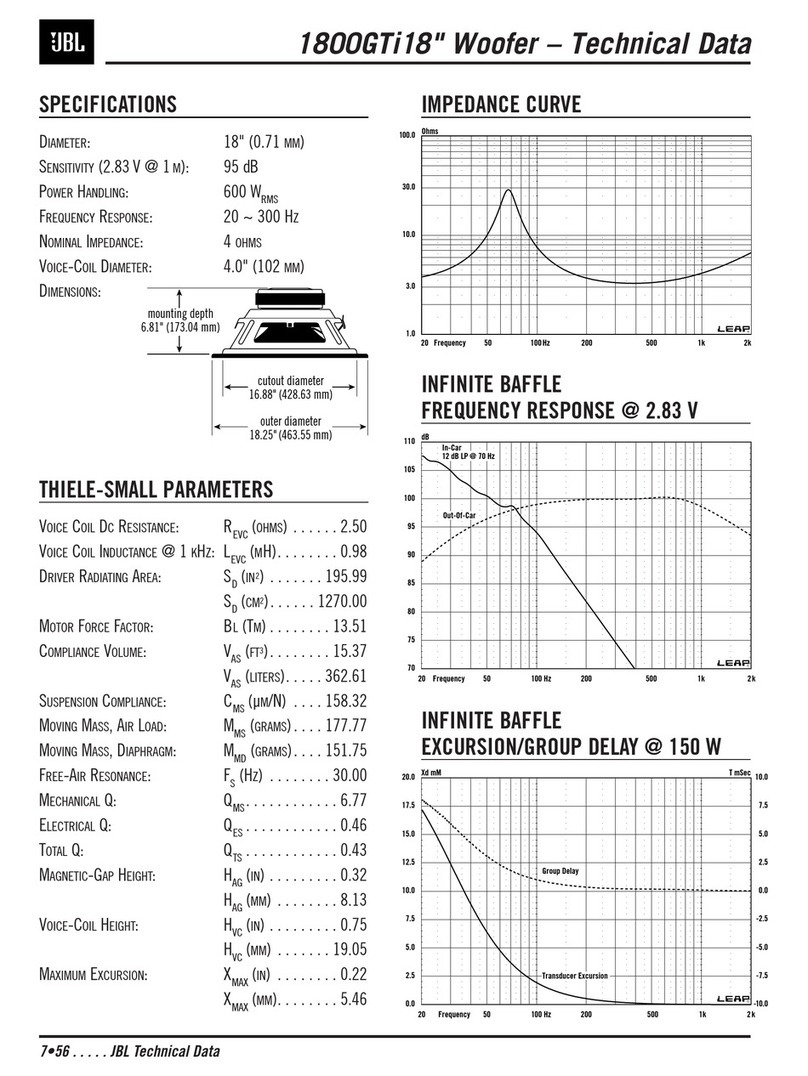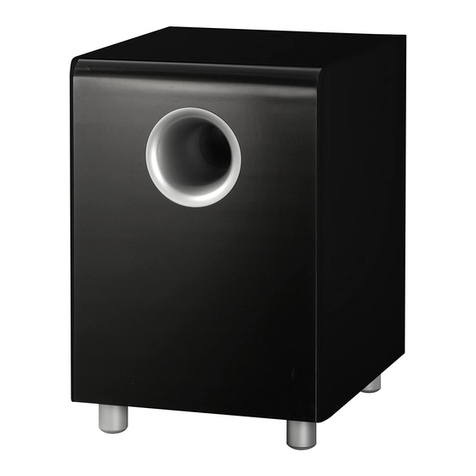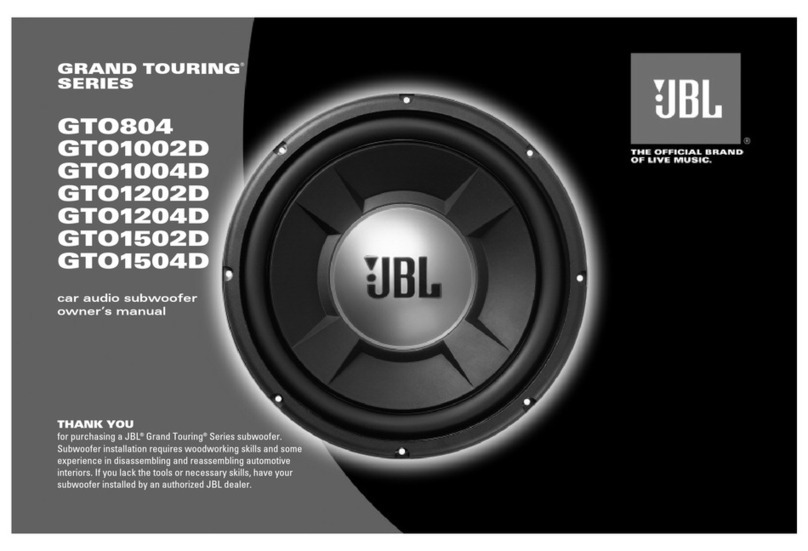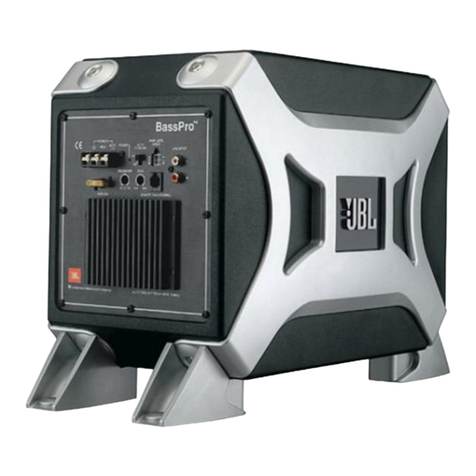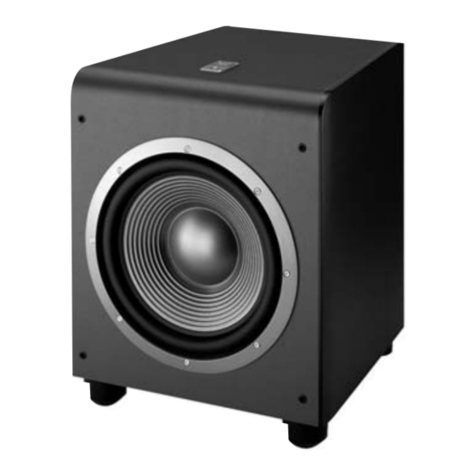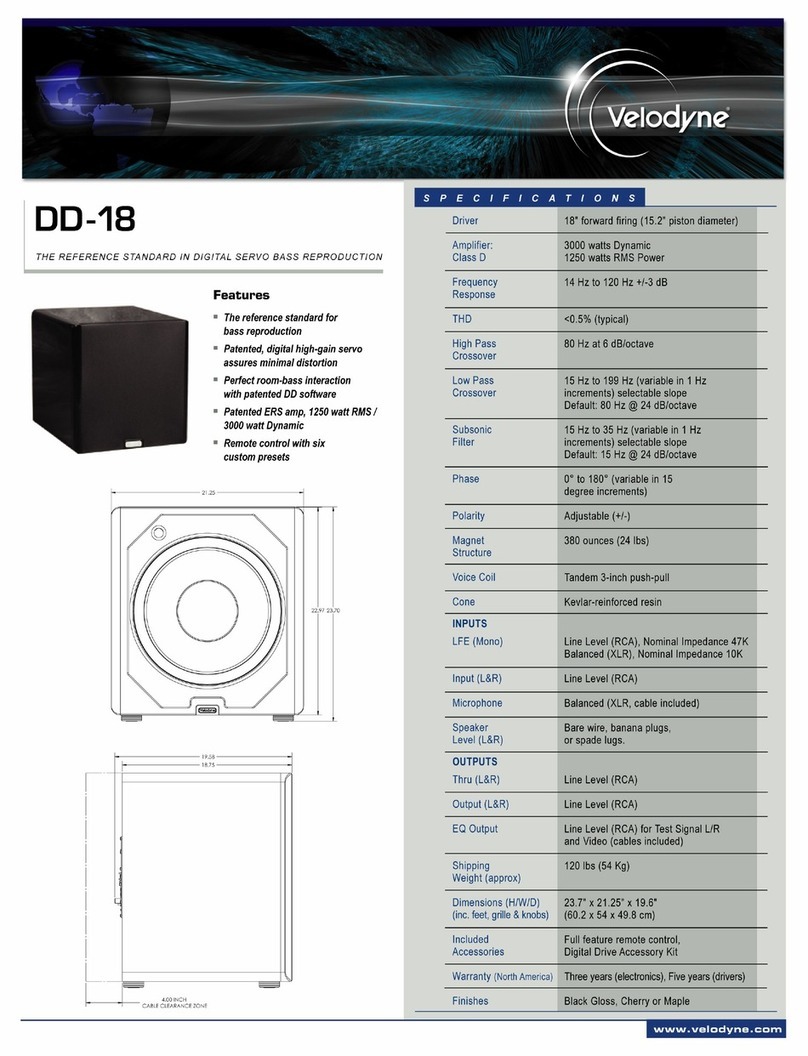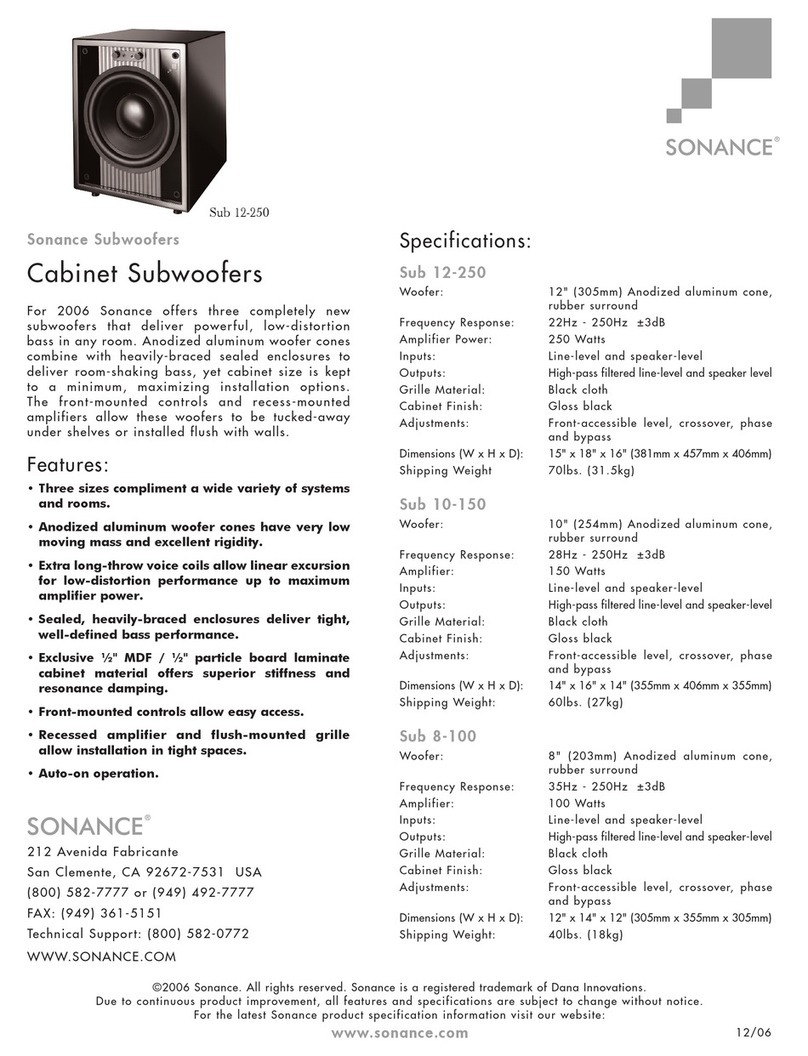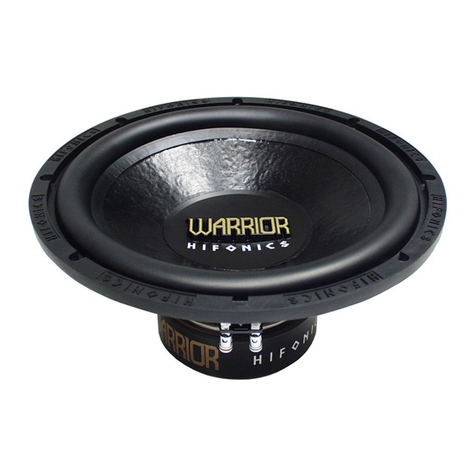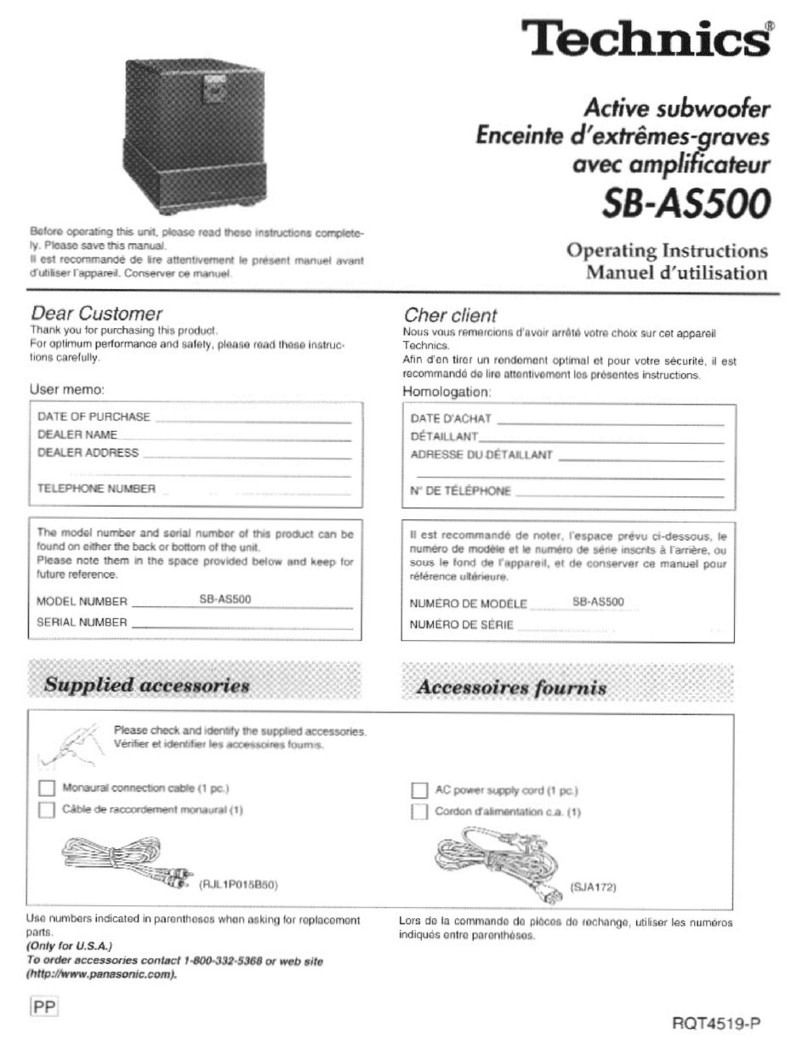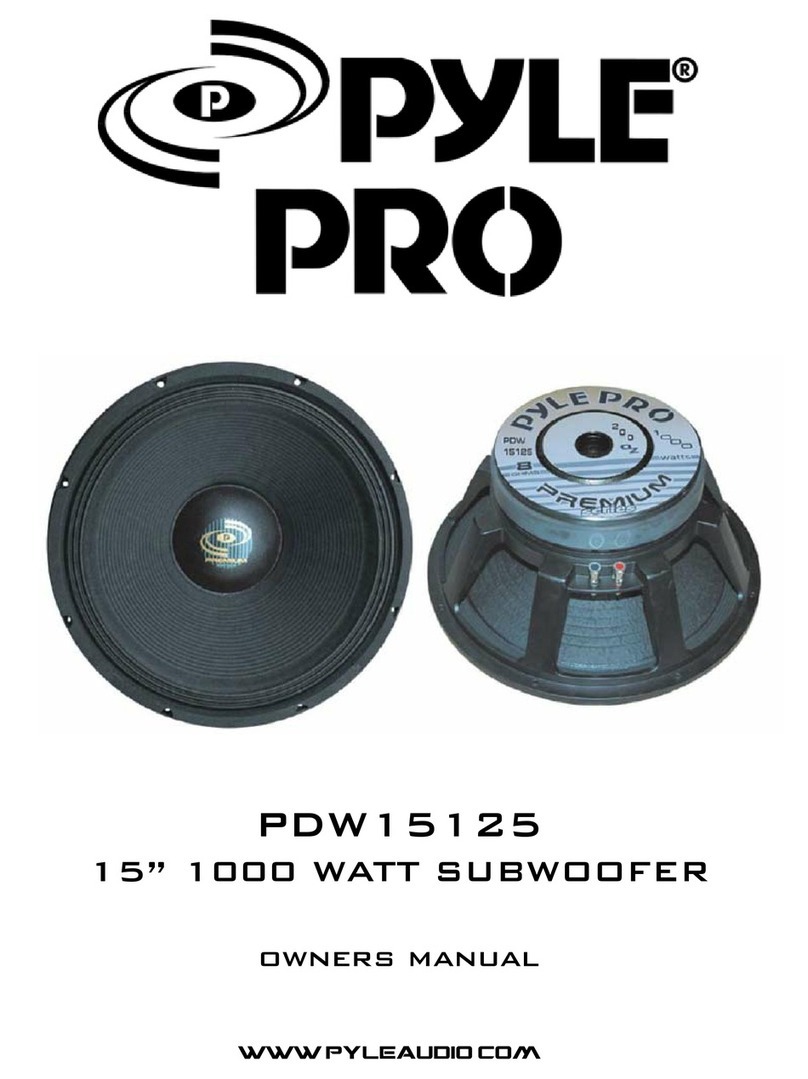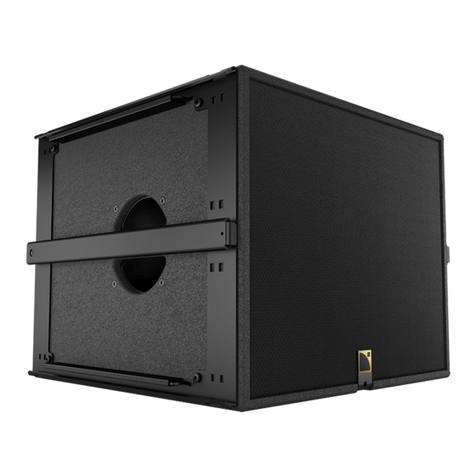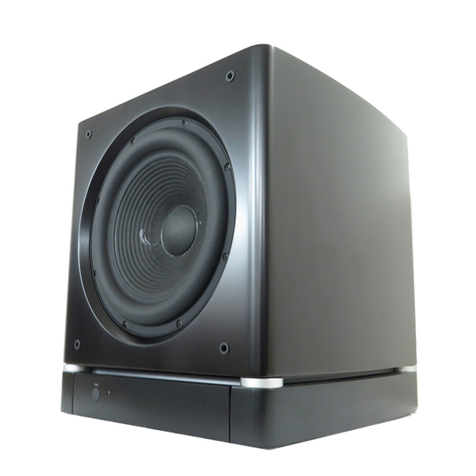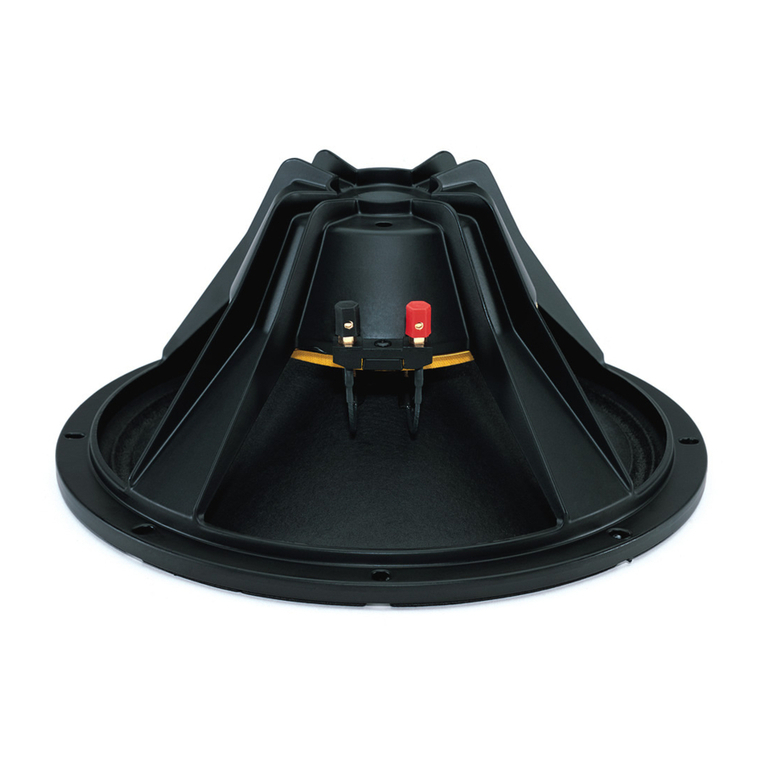2
CHOOSING AN ENCLOSURE
THANK YOU for purchasing a
new JBL CS Series subwoofer.
Subwoofer installation requires
woodworking skills and some
experience disassembling and
reassembling automotive interiors.
If you lack the tools or necessary
skills, have your subwoofer installed
by an authorized JBL dealer.
WARNING: Playing loud music
in an automobile can permanently
damage your hearing as well as
hinder your ability to hear traffic.
We recommend listening at low
levels while driving. JBL accepts no
liability for hearing loss, bodily injury
or property damage resulting from
use or misuse of this product.
CS Series subwoofers are optimized
to perform best in small, sealed,
vented and prefabricated bandpass
enclosures. While infinite-baffle
mounting of CS Series subs is
possible, power handling will be
greatly compromised because
there’s no enclosed volume of air
to prevent the speaker’s cone from
moving past its limit. For this reason,
we do not recommend infinite-baffle
mounting for CS Series subwoofers.
You should choose the enclosure
you will use based on the type of
music you listen to, how much
amplifier power you will use for the
subwoofer and how much space
inside the vehicle you can devote
to a subwoofer enclosure.
Because a sealed enclosure
provides the most control over the
woofer’s movement, a woofer
mounted in a sealed enclosure will
handle more power than a woofer
mounted in another enclosure type.
Sealed enclosures provide more
accurate sonic reproduction than
other enclosure types, so they are
well suited to all types of music.
Sealed-enclosure construction
is straightforward and there are
many prefabricated sealed
enclosures available. An optimum
sealed enclosure is always smaller
than other types of enclosures
optimized for a particular speaker,
so they require the smallest amount
of space inside the vehicle.
Vented enclosures provide better
efficiency in the 40Hz – 50Hz range
but this efficiency comes at the
expense of sound in the lowest
octave (below 40Hz) and at the
expense of some control and power
handling. If you are using a small
amplifier, a vented box will provide
more bass output from less power.
Vented enclosures are also well
suited to a variety of music types.
Because vented enclosures require
the volume of the enclosure and the
size of the port to have a specific
relationship with the characteristics
of the woofer, the enclosure must
be built exactly to the specifications
provided. While there are some
prefabricated vented boxes available,
matching a prefabricated box to a
particular woofer is difficult. If you
wish to use a vented enclosure, we
strongly recommend having your
authorized JBL dealer build it or
verify that your design is correct
if you wish to build it yourself. An
optimum vented enclosure is always
larger than the optimum sealed box
for the same woofer and will require
more space inside the vehicle.
Bandpass enclosures often
provide the most output available
from any amplifier and subwoofer
combination at the expense of
sonic accuracy. If sheer SPL
(sound-pressure level) is what you
desire most, choose a bandpass
enclosure. Bandpass-enclosure
design is very tricky and the aid
of a computer and enclosure
design software is necessary. If
you are an experienced installer
or have some woodworking
experience, you may wish to build
the enclosure described in the
enclosure design sheet included
with this woofer. Fortunately, there
are many prefabricated bandpass
boxes available and they are all
optimized to extract the most
output possible from any woofer.
Bandpass enclosures can be quite
large and may require a lot of space
inside your vehicle.
